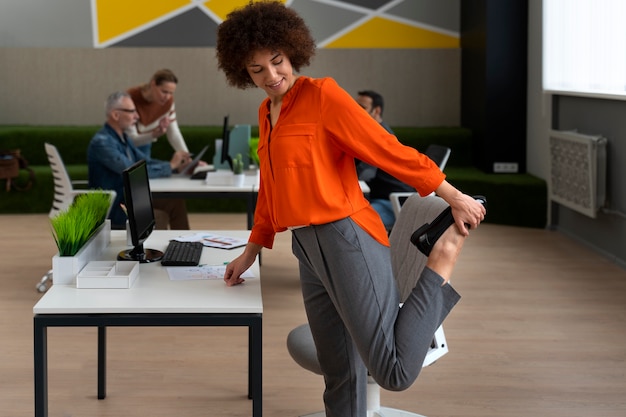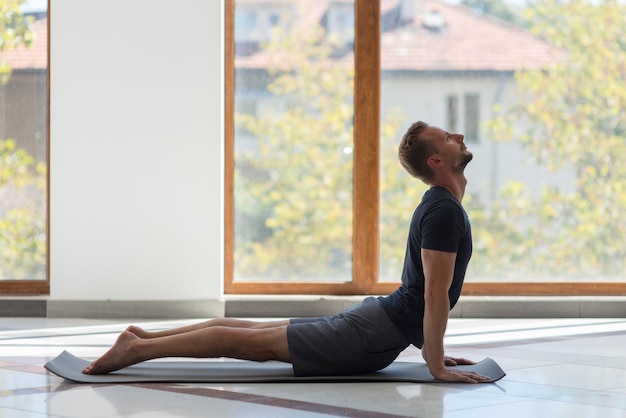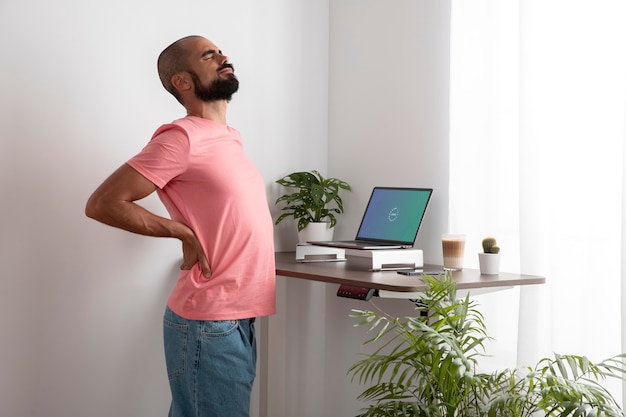Spending long hours at a desk is a reality for millions of people. Whether you're working from home or in an office, prolonged sitting can lead to stiffness, poor posture, and even chronic pain. The good news? You don’t need a gym membership or hours of free time to stay fit and reduce injury risk. Desk fitness—simple, intentional movements performed while seated or standing near your workspace—can make a big difference.
This beginner-friendly guide breaks down what desk fitness is, why it works, and how to adapt it to your daily routine—no matter how busy your schedule.
Sitting for extended periods slows circulation, tightens muscles, and increases pressure on your spine. According to health research, sedentary behavior is linked to higher risks of musculoskeletal disorders, cardiovascular issues, and reduced mental focus.
Desk fitness combats these effects by encouraging micro-movements—small, frequent exercises that keep your body engaged. These movements improve blood flow, maintain joint mobility, and reduce muscle fatigue. Over time, they help correct posture imbalances and prevent repetitive strain injuries, especially in the neck, shoulders, and lower back.

You don’t need equipment or space. These exercises can be done in under five minutes and repeated throughout the day.
Gently tilt your head to the right, bringing your ear toward your shoulder. Hold for 15–20 seconds, then switch sides. Avoid raising your shoulder—keep it relaxed. This stretch relieves tension from screen gazing.
Roll your shoulders forward in a circular motion for 10–15 seconds, then reverse. This improves shoulder mobility and counters the hunched posture common at desks.
Sit tall, place your right hand on the back of your chair, and gently twist your torso to the right. Hold for 15 seconds, then switch sides. This enhances spinal flexibility and eases lower back stiffness.
Extend your arm, palm up, and gently pull your fingers back with the other hand. Hold for 10–15 seconds. Repeat with the palm facing down. This helps prevent carpal tunnel strain from typing.
While seated, extend one leg straight out, hold for 5 seconds, then lower. Repeat 10 times per leg. This strengthens the quadriceps and improves circulation in the legs.
Stand up, feet shoulder-width apart. Lower into a shallow squat, keeping your back straight. Return to standing. Do 10–15 reps. This activates glutes and leg muscles after long sitting periods.

These movements are based on principles of ergonomics and functional fitness. They target areas most affected by sitting: the neck, shoulders, spine, wrists, and hips. By engaging muscles and joints in controlled ways, you stimulate circulation, reduce stiffness, and maintain range of motion.
Even brief activity breaks reset your nervous system, improving alertness and concentration. Studies show that micro-movements throughout the day can reduce lower back pain by up to 50% over time and enhance overall work performance.
Consistency matters more than intensity. Here’s how to make desk fitness stick:
Exercise helps, but your setup matters too. Ensure your chair supports your lower back, your screen is at eye level, and your wrists are neutral while typing. An ergonomic workspace reduces strain and makes desk fitness more effective.
Consider a sit-stand desk or a stable surface for standing stretches. Even small changes—like placing your water bottle a few steps away—can encourage more movement.
Desk fitness isn’t about replacing workouts—it’s about integrating movement into your day to protect your body and mind. With just a few minutes of intentional activity, you can reduce injury risk, improve posture, and feel more energized.
Start small. Pick two or three exercises. Build the habit. Over time, your body will thank you with less pain, better focus, and improved well-being.

Wellness

Wellness

Wellness

Wellness

Health

Wellness

Wellness

Wellness

Wellness

Fitness

Wellness

Health

Health

Fitness

Health

Health